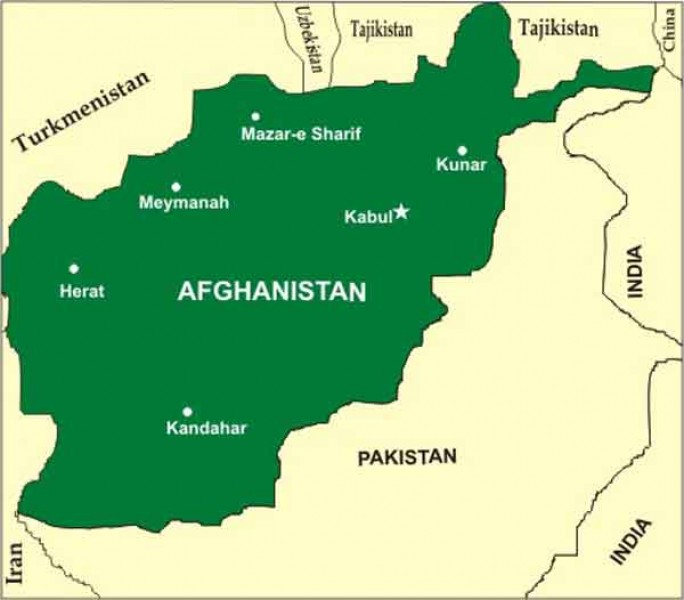In the 1960s, “Domino theory’ was a popular phrase used by the Western strategic analysts to justify American intervention in Vietnam. To jog the reader’s memory, the said theory postulated that if Vietnam, the first domino were to fall to the Communists, then the whole of South East Asia will turn Communist, an outcome not acceptable to the US and West. To some extent prophesy did prove right. All the Indochina states, namely Cambodia and Laos, followed suit and fell to Communist forces once South Vietnam got integrated with the Communist North in 1976. But the spread of Communism remained limited to just these three countries and other countries of South East Asia, namely Malaysia, Thailand, Singapore, Indonesia and Philippines, remained outside the pail of Communism.
In case of Afghanistan falling to extremist Taliban the fear is being expressed that this will give rise to demand for a similar ‘Sharia’ based strict Islamic rule in Pakistan. One point that needs to be made in case of the Taliban in Afghanistan is their social composition. Most Taliban recruits and their support is from rural and impoverished sections of society. It is the mostly urban Middle Classes that are both fearful and opposed to Taliban. It is a sobering thought that the middle class is unlikely to offer any meaningful resistance to fanatical Taliban. To some extent the Taliban takeover of Afghanistan does mirror the similar ‘revolution’ that took place in Iran when a modernizing regime of Shah was overthrown by hardline Islamists led by Ayatollah Khomeini.
Pakistan has similar socio-economic profile as Afghanistan and a nascent hardline Islamist underground. Irrespective of Taliban’s promise of non-interference in internal affairs of others, this spillover of Afghan revolution is likely to begin shortly. Another perpetual friction point between Pakistan and Afghanistan is the status of Durrand Line , that has given half of Pakhtoon dominated Afghanistan to Pakistan.No regime in Afghanistan can afford to give up this claim to Pakhtunistan province of Pakistan.
To the North of Afghanistan are the erstwhile Soviet Republics of Uzbekistan and Tajikistan. Presently these are under Russian influence. In all the ex-Soviet Central Asian republics, the former Communist leaders’ metamorphosed into nationalists and continue their authoritarian rule. Most of them have shunned extremist Islam. Not unlike Pakistan, there is a great gulf between the ruling elites and masses. All these majority Muslim countries are vulnerable to appeal of Islamists.
There have been some sections of Indians who have expressed concern over the effect of happenings in Afghanistan on Kashmir. Yes, the Taliban takeover will certainly raise the morale of Islamist insurgents everywhere including Kashmir but beyond that it is unlikely to have any direct effect.
It is incorrect to compare the situation of 2021 with the situation of 1990s. At that time 20% of terrorists operating in Kashmir indeed did come from Afghanistan. In a classic case, one John Lynd, an American Taliban who was captured by the American forces when they entered Afghanistan in 2001, confessed that he had also fought in Kashmir. In the 1990s there was no wire fencing on the LOC and no counterinsurgency grid as there is now. In the 1990s and right up to year 2000, the Afghan Mujahideen (predecessors of Taliban) were the blue eyed boys of the US and the CIA and received material and money. Neither of that is true as of now.
In the 1990s the local administration in Kashmir was working hand in glove with the terrorists. It is fact that arms and ammunition for the Kashmiri Mujhideen, were often transported in forest department vehicles. This bit was confirmed to me by Gen. (retd) KV Krishna Rao, the then governor of J&K, when he had come to Pune to release my book on Kashmir. In 2021 after abolition of article 370 and change in status of J&K to union territory, the Central govt. has a better grip on the administrative machinery of the state.
The Taliban take over is however a major strategic set back to India. Taliban that has been nurtured by Pakistan is unlikely to pose any immediate security threat to it. Thus the two front threat situation that India had created for Pakistan, no longer exists. In addition, loss of Afghanistan also means loss of direct access to Baluchistan. This reduces Indian ability to pay back Pakistan for its Kashmir intervention.
In the short run it also appears that Indian investment in developmental activity in Afghanistan, building roads, dams, schools and hospitals etc was a waste. Even our consistent support to their cricket team, hosting of thousands of Afghan students seem to have come to a naught. In some ways it does makes a point that mere ‘soft power’ not backed by hard power can seldom achieve geo-political goals. But one effect of this success in projecting out soft power is that the new Taliban regime will find it very difficult to pursue anti-Indian policies.
While seeing the dismal images of Kabul happenings of TV, one was struck by the fact that there seemed to be very little attention paid to Covid-19 precautions. The current chaos is Afghanistan is tailor made for spread of Covid-19. Should the corona virus pandemic strike Afghanistan hard, even the strident Islamist Taliban would have to look to India for vaccine and medical resources- Pakistan is incapable of providing it.
In the early stages of Covid 19 we did provide free vaccines to Afghanistan. May be that would again be our trump card!





